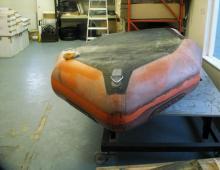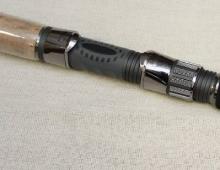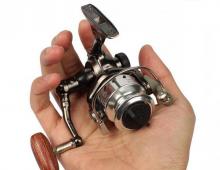Fish kill
By its desolation fish kill is the greatest disaster. A huge number of commercial fish and their juveniles die annually in many water bodies. Many good reservoirs abounding in fish have been devastated and devalued by slaughter. Because of him, sports facilities were closed. In many lakes and ponds, for the same reason, it is impossible to breed valuable fish species, and ponds are used only for carp rearing in summer. In winter, carp not caught in ponds, with rare exceptions, completely die from starvation.
Fish kill occurs from lack of oxygen in water. In summer, oxygen enters the water from the atmosphere and is released by aquatic plants. It is continuously consumed for the oxidation (rotting) of silt and dying aquatic animals and plants, as well as for the respiration of aquatic organisms. With a strong overgrowth of a reservoir or the development of microscopic algae (“water blooms”), oxygen consumption in summer can be much higher than intake, especially at night, when plants do not release oxygen. In these cases, freezing can occur in the summer. But summer frost is less common. The main danger is winter freeze, when the ice cover prevents the flow of oxygen into the reservoir from the atmosphere. During this period, plants do not enrich the water with oxygen. The amount of oxygen in the water can be so reduced that the fish begins to suffocate. Often, the entire fish population of the reservoir dies completely, or many valuable fish species die and only crucian carp survive.
Unfortunately, people often look at the freeze as an unfortunate, but quite natural phenomenon. They regret the death of fish, the devastation of reservoirs, and they care little about the fight against slaughter. And in some places they even try to profit from the slaughter.

The lack of effective means of combat with this evil. In fact, it is possible and necessary to fight against freezing. Summer kill in fish ponds is eliminated by spraying water with garden sprinklers. Until recently, as almost the only "preventive measure" of winter zamora, "airs" were used - large ice holes, which are cleared of ice from time to time. In some cases, sheaves of straw, reeds or reeds are frozen in the hole, naively believing that a sufficient amount of air will pass through the sheaves into the water.
- The impression about the usefulness of the ice holes is created because the fish, during a freeze, first desperately “climbs into the hole”, and then its course stops. So they think that thanks to the holes, the fish “breathed”. This belief is strengthened by the fact that often, after a kill, live fish are found in a stagnant reservoir in spring and summer. In addition, the fish in the holes by the end of the kill becomes more mobile and more careful.
In reality stop "move" fish means that all or part of it is already died - "dead" as the fishermen say. And indeed, in the hole of a stagnant reservoir, one can see a lot of dead fish lying on the bottom. In addition, part of the fish population of the reservoir ceases to go into the hole, as it finds less deadly zones. After all, the freeze does not always spread throughout the reservoir. Such prosperous zones are found near springs, in places with an air layer under ice, which, when the water level drops, hangs on hummocks, bushes, reed beds flooded since autumn, or on the slopes of a steep coast. The survival of fish in these areas until spring reinforces the belief in the action of "vents".
Increased mobility and alertness fish in the hole after many fish were taken from it by hand, due to the fact that the water in the hole is a little refreshed, especially due to splashes when catching fish. In such water, the fish does not experience suffocation and becomes more mobile. However, by the few specimens of the fish kept at the hole at this time, one cannot judge that all the fish in the reservoir also feel safe. After all, the volume of refreshed water in the hole is very small, and in the absence of a current, already at a distance of 1-2 m from the "air" in the reservoir, a freeze reigns. That is why dead fish are visible near the hole.
- Water has the highest density at + 4 ° C. When heated and cooled, its specific gravity decreases. Cooling in the hole from contact with air, the water becomes lighter and, in the absence of a current, forms a kind of liquid plug. Consequently, the refreshing effect of the "air" cannot spread throughout the reservoir. In addition, the ice-holes freeze very quickly, while maintaining them open is reduced, at best, to 2-3 times their renewal during the day.
In places with a noticeable current, water refreshed in the “air” spreads beyond the ice hole.



